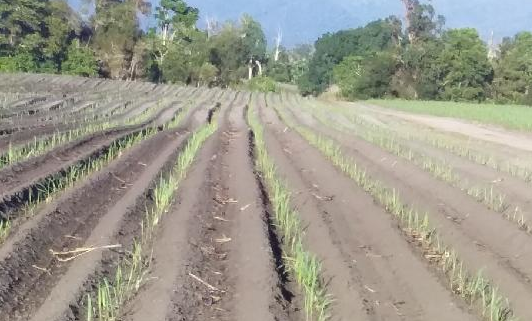Mid July of each year, we usually talk about planting time, and similar to last year, the wet weather in 2021 has held up some planting until this week.
Sugarcane is planted as billets or “setts”, small pieces of cane usually about 150-200mm long that have one or two “eyes”. These eyes germinate when in contact with the soil and reproduce the new shoot which emerges through to the soil surface. The “Soil –sett contact” is important for cane germination, if the soil is too loose, with too many air pockets around the cane billets (or setts) it can affect germination.
The speed of cane germination depends on several other factors as well ranging from soil temperature and moisture to the age of the seed cane used for planting.
So far this year we haven’t really had much cold weather, soil temperature needs to be more than 17 degrees Celsius for the eyes to germinate so that isn’t an issue to date.
Soil moisture or lack of certainly is not an issue either! On the contrary planting has been held up by wet weather.
Once cane is played, we work on a 30-day period for germination to occur. If germination is slow because it is too cold or persistent drizzly rain occurs, a disease called Pineapple disease can occur. We mention this each year because it is one of diseases that can occur in any year. A fungus called Ceratocystis paradox causes the disease which means it basically starts rotting the cane billet .The use of selective fungicides at plating helps minimize the risk of Pineapple disease. The recent sunny days we are having are ideal for planting and even with the recent rain; some of the early-planted cane still had good, warm conditions to germinate well within the 30-day period.
Another factor that can affect germination is the actual age of the seed cane to be planted.
We recommend seed cane be less than 12 months of age to maximize the amount of growth hormones in the billets. These hormones promote germination. For some varieties, even seed cane around 10-11monts of age is best, we found this with Q250 and the newest variety, SRA 28 may fall into the same category. Once seed cane gets close to 12 months of age or older, the CCS build up means less growth hormones and more chance of plant failure.
The TSL service of testing cane for CCS isn’t restricted to cane for milling, we can also sample seed cane to make sure of its suitability for planting.
Just this week we have seen SRA 28 planted with 10 month of seed cane and the results are superb.

